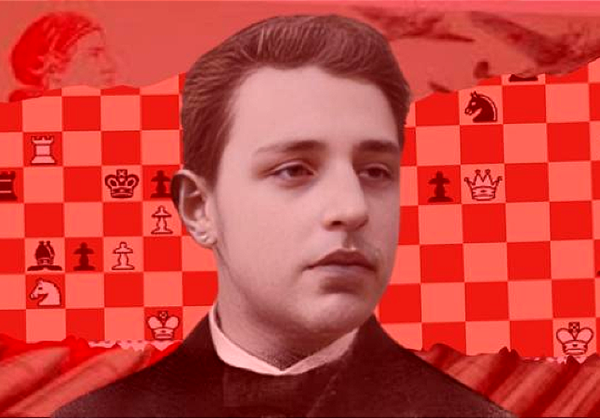You can make six figures in New York by reporting idling trucks

Hi everyone! Mathew Ingram here. As many of you probably know, I am able to continue writing this newsletter in part because of your financial help and support, which you can do either through my Patreon or by upgrading your Ghost subscription to a monthly contribution. I enjoy gathering all of these links and sharing them with you, but it does take time, and your support makes it possible for me to do that. And I appreciate it, believe me! If you like this newsletter, please share it with someone else, and thanks for being a reader.

From Curbed: "Sometimes Wu remembers how his family balked when he told them he was going to start ratting out lawbreakers in New York City. But for a chance at making nearly $90 for a minute of his time, he found he could push their skepticism to the bottom of his consciousness.The source of the money was the city itself, thanks to the Citizens Air Complaint Program, which allows members of the public to claim a reward by sending in videos of buses and trucks that idle illegally. The statutory limit for leaving your engine running is three minutes. But on a block with a school, that drops to 60 seconds, which is what has now drawn Wu several times to this particular block in Manhattan that’s being poisoned by the pooling diesel exhaust of nearly a dozen yellow school buses. Wearing a mask to filter out the acrid tang of sulfates and carbon soot, Wu uses his phone’s camera to capture the license plates and company markings on the buses."
Was Rudolph Diesel, the inventor of the diesel engine, murdered?

From History.com: "On September 29, 1913, Rudolf Diesel, inventor of the engine that bears his name, disappears from the steamship Dresden while traveling from Antwerp, Belgium to Harwich, England. On October 10, a Belgian sailor aboard a North Sea steamer spotted a body floating in the water; upon further investigation, it turned out that the body was Diesel’s. There was, and remains, a great deal of mystery surrounding his death: It was officially judged a suicide, but many people believed (and still believe) that Diesel was murdered. Diesel patented a design for his engine on February 28, 1892 and at the time of his death, he was on his way to England to attend the groundbreaking of a new diesel-engine plant—and to meet with the British navy about installing his engine on their submarines. Conspiracy theories began to fly almost immediately: “Inventor Thrown Into the Sea to Stop Sale of Patents to British Government,” read one headline."
The little-known story behind Scotland's version of Stonehenge

From the BBC: "On the road north-west from Glasgow through the hills of Argyll, civilisation peels away and the landscape becomes emptier of life and stories – but only to the untrained eye. As the road clears Loch Fyne, curving north out of the village of Lochgilphead, the great expanse of Kilmartin Glen comes into view. This was once the Scotland seen by the 6th- and 7th-Century kings of the ancient Gaelic kingdom Dál Riata. But look closer – much closer still, as the road weaves north to harbour town Oban – and it quickly becomes clear that Kilmartin Glen is a place where history lurks in great abundance. For this is the setting of a prehistoric collection of henge monuments, burial cairns, standing stones, cist chambers, stone circles and the densest concentration of rock art sites anywhere in Britain, with more than 800 ancient relics at the last count. This multitude was built before the Romans and Greeks came along, before the first pyramids were built some 4,700 years ago and before Stonehenge."
Christians in Switzerland used to eat tiny pieces carved from statues of the Madonna

From Atlas Obscura: "When Hannes Fluck was in high school, he volunteered on an archaeological dig and excavated a small Madonna figurine from the wall of a Swiss peasant farmhouse. Now a science curator at the Ziegelei Museum in Switzerland, Flück remembers the clay figure, two thirds of it scraped away. “It was a bit surprising because I didn’t know what it was,” he recalls. It wasn’t until a colleague from the state archaeological service explained it to him that he understood the significance. The scientists overseeing the dig estimated it was from the 18th or 19th century, when the tradition of scraping off pieces of Marian statues and eating them flourished. The figurines were known as Schabmadonna, from the German schaben, meaning to scrape or shave, and they were unfired terracotta figurines produced by the Abbey of Einsiedeln."
How an accidental virus release triggered the so-called Russian flu in 1977

From The Conversation: "Nineteen-year-old U.S. Army Pvt. David Lewis set out from Fort Dix on a 50-mile hike with his unit on Feb. 5, 1976. On that bitter cold day, he collapsed and died. Autopsy specimens unexpectedly tested positive for an H1N1 swine influenza virus. Virus disease surveillance at Fort Dix found another 13 cases among recruits. Alarm bells instantly went off within the epidemiology community: Could Pvt. Lewis’ death from an H1N1 swine flu be a harbinger of another global pandemic like the terrible 1918 pandemic that killed an estimated 50 million people worldwide? The U.S. government acted quickly and began a mass immunization campaign. But where did the swine flu come from? The introduction of the 1977 H1N1 virus is now thought to be the result of vaccine trials in the Far East. People were so concerned about the possibility of a new pandemic that they inadvertently caused one."
Theo Jansen's kinetic sculptures move by wind power
These 'Beach Animals' were created by Theo Jansen as a fusion of art and engineering. The kinetic structures walk on their own and get all their energy from the wind.pic.twitter.com/1m2JvPXUSB
— Wonder of Science (@wonderofscience) September 4, 2024
Acknowledgements: I find a lot of these links myself, but I also get some from other newsletters that I rely on as "serendipity engines," such as The Morning News from Rosecrans Baldwin and Andrew Womack, Jodi Ettenberg's Curious About Everything, Dan Lewis's Now I Know, Robert Cottrell and Caroline Crampton's The Browser, Clive Thompson's Linkfest, Noah Brier and Colin Nagy's Why Is This Interesting, Maria Popova's The Marginalian, Sheehan Quirke AKA The Cultural Tutor, the Smithsonian magazine, and JSTOR Daily. If you come across something interesting that you think should be included here, please feel free to email me at mathew @ mathewingram dot com



